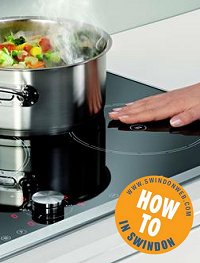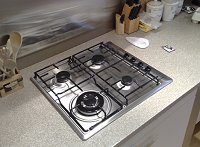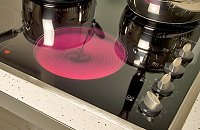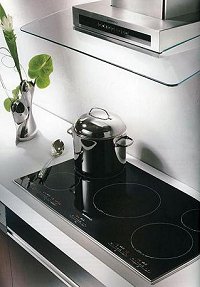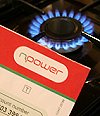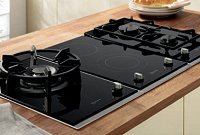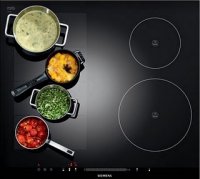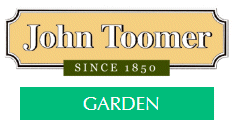Hobs - let's get cookin'!BUYING GUIDE: how to and where to in Swindon
So here's our guide to hobs: the questions you should be asking and, most importantly, the best places to buy and get advice from in Swindon.
Hobs: the basics
Gas or electric?
GAS HOBS
Gas is the most popular because the heat is visible, easy to control, and in many cases cheaper to use than electricity. But perhaps not as stylish or easy to clean.
ELECTRIC HOBS
More choice here - 3 types to be precise. All full explained further down.
- sealed plates
- ceramic hobs
- induction hobs
You can also combine two or more cooking styles via what they call a
domino hob.
Essential questions
There are several obvious questions that you need to ask yourself when you decide to buy your hob. You should consider:
1. Where is your hob going to go?
2. Would you like a built-in hob or a freestanding cooker?
3. What is your budget?
4. How many cooking zones are applicable to your home and lifestyle? 5. How much will the hob cost you in energy bills?
6. Would you benefit from combining electric and gas hobs?
Where Is Your Hob Going To Go?
Flexibility and style
This is the real advantage of a hob, compared to the tradional free-standing cooker.
A tradiontional freestanding cooker is a larger appliance and can lack versatility, as well as being more difficult to clean. However, freestanding cookers can still be a cheaper alternative to buying two separate appliances and are still universal, practical appliances.
Electrical and gas output
Ahhh, the real obvious, but often overlooked.
Always check that your electric or gas output can support the appliance you have chosen to buy.
For example, a multifunction cooker will normally require a 30 amp power output which is considerably higher than most oven outputs which usually have a 13 amp power output.
You may also have to add a power source to your kitchen if you buy a built-in hob whereas a freestanding cooker would use the power source from your old cooker.
What fits?
Is it new hob or a replacement?
An average hob will contain four heating zones of various sizes and will be typically:
- 600mm wide
- 500mm deep
Smaller households may opt for a domino two zone hob whilst larger households may look to purchase a hob with 6 or more cooking zones.
Hob dimensions can therefore vary so always consider the measurements of where you would like your hob to go - especially if you are
replacing an existing hob as you will need to consider the “Aperture Size” which is the size of the hole a hob sits into.
Right then, so which hob do I need?...
If it's gas
The choice come down to the look and finish, with either either cast iron or enamelled pan supports.
If it's electric
.... like we've already said above, there's more to consider; sealed plates, ceramic hobs or induction hob. Read on!
Sealed Plates
As they are a basic appliance, they come with limitations such as taking considerable time to heat up and cool down.
They also lack controllability but nevertheless, they are a very durable product and are easy to clean.
Ceramic Hobs
Ceramic glass hobs have a sleeker, modern design and offer better controllability than sealed plates.
Their
stylish appearance suits most kitchen designs.
Their big advantage is they they contain more efficient components that allows them to heat up and cool down rapidly.
Beware of a halogen heat source
Most ceramic hobs are standard radiant hobs, meaning that they have a coiled electric element beneath the ceramic glass.
But you may find some ceramic hobs have a halogen heat source, where the heat comes from a bulb rather than a coiled element.
Halogen is a less popular appliance and will eventually be phased out as modern standard radiant hobs are just as efficient and cheaper to produce.
Further, halogen bulbs have the potential to blow which can be costly to repair.
Induction Hobs Induction hobs are a relatively new appliance but have quickly positioned themselves as the best hob on the market because of a number of key advantages.
- safer, especially for families with young children
- easier to clean
- quicker change in temperature
Induction hobs have a magnetic inductor underneath the ceramic glass which creates a magnetic field when a magnetic pan is placed upon a cooking zone. This magnetic reaction is what creates the heat. As induction hobs do not radiate heat, they dramatically reduce the risk of accidental burns.
Furthermore, spillages do not burn onto the hob’s surface, making induction hobs incredibly easy to keep clean.
Induction hobs’ ability to control heat is unrivalled by its competitors. Changes in temperature will occur instantaneously as electrical currents generate the temperature. The temperature is regulated so precisely that chocolate can remain melted without burning. Induction hobs are also favoured by families with young children as induction cooking is an incredibly safe form of food preparation. Many will have a child lock built into them.
The downside?...
You can
only use iron or steel pots and pans to cook on induction hobs because only ferrous utensils circulate the electrical current induction hobs create to generate heat.
Energy Efficiency
Have you've looked at your gas and electric bill lately!?
All domestic appliances will have an Energy Label which will indicate their efficiency. Gas appliances are cheaper to run than electricity but are not as efficient due to the amount of heat that they waste. Sealed plate appliances and ceramic hobs (both standard radiant & halogen) will use approximately the same amount of energy but induction hobs are the most efficient for numerous reasons. Induction hobs do not take time to heat up and are incredibly efficient because it is the pan that heats up and not the hob zone so there is very little heat loss, if any at all. Domino Hobs
A domino hob is ideal for three reasons:
- if you lack space
- if two cooking zones are all you need
- if you require greater flexibility within your kitchen
Domino hobs come in gas, ceramic and induction ranges.
There are also BBQ grill domino hobs, wok burners and even deep fat fryers. All are designed to sit next to a hob, allowing you to combine two or more cooking options.
Installation
Get a professional to do it
When you purchase a hob, please ensure that it is installed by a qualified, registered electrician or gas fitter.
Some induction hobs require a higher power output than other hobs so ensure that your electrics can handle an appliance with an increase in power draw.
Furthermore, a safety concern has arisen about the affects of induction cookers on individuals who have a pace maker. Although literature does suggest that it is safe for individuals who have pace makers to use induction appliances, you should follow necessary precautions.
Buying Tips
Have a good 'prod and a poke'! - and think practical
Look and feel
Obvious really, but the best advise is to go into a showroom with plenty of hobs on offer and a good ‘poke and prod’, you'll soon get a feel for the one you like.
Space and practicality
Probably the most important because remember: a hob is for cooking on!
Four cooking zones are usually enough, but are rarely spaced out enough to fit a series
of large utensils onto the hob.
Choosing hob that also has
greater width between cooking zones which makes it helpful when prepping large dishes.
The
warming plate is also a great feature which is of particular value, as there's nothing worse than cold food!
Remember,
you only have one pair of hands and more often that not, food is left to stand whist you take care of another.
Appliance World
This feature was written in association with Appliance World, one of the UK's biggest retailers of domestic appliances and based here in Swindon.
Located in Hobley Drive, Stratton St Margaret their showroom has over 200 items on show with 8 fully working kitchens allowing customers the rare opportunity to try before they buy.
Where also to buy in Swindon:
Leading independents in Swindon also include Burden Electronics and Basics, who also deal in second-hand appliances. > Burden Electronics - more info |
|
||||||||
|
||||||||
|
||||||||
|
||||||||



